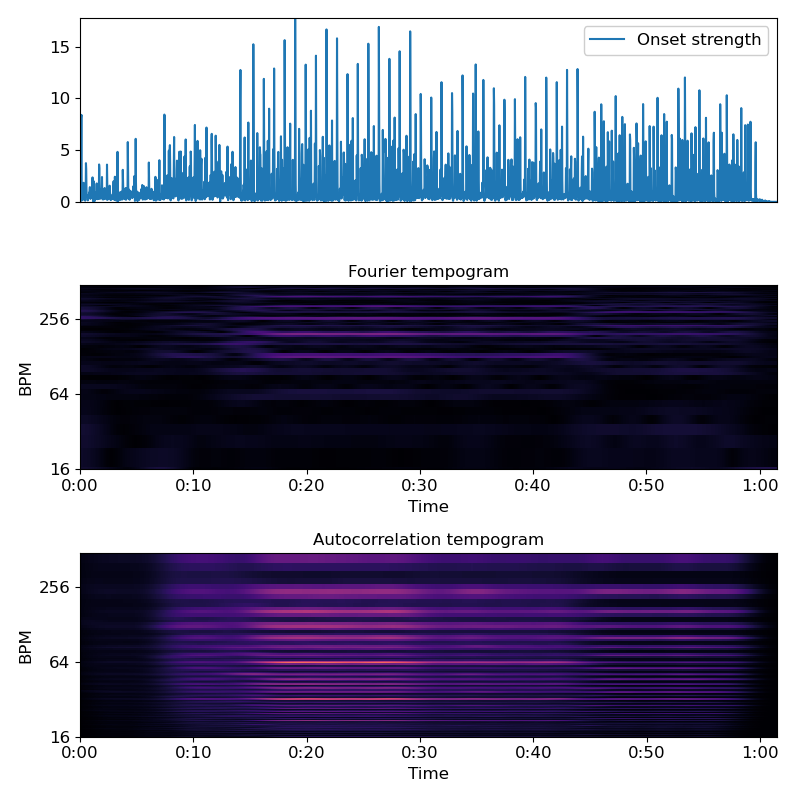Caution
You're reading an old version of this documentation. If you want up-to-date information, please have a look at 0.9.1.
librosa.feature.fourier_tempogram¶
- librosa.feature.fourier_tempogram(y=None, sr=22050, onset_envelope=None, hop_length=512, win_length=384, center=True, window='hann')[source]¶
Compute the Fourier tempogram: the short-time Fourier transform of the onset strength envelope. [1]
- 1
Grosche, Peter, Meinard Müller, and Frank Kurth. “Cyclic tempogram - A mid-level tempo representation for music signals.” ICASSP, 2010.
- Parameters
- ynp.ndarray [shape=(n,)] or None
Audio time series.
- srnumber > 0 [scalar]
sampling rate of y
- onset_envelopenp.ndarray [shape=(n,)] or None
Optional pre-computed onset strength envelope as provided by onset.onset_strength.
- hop_lengthint > 0
number of audio samples between successive onset measurements
- win_lengthint > 0
length of the onset window (in frames/onset measurements) The default settings (384) corresponds to 384 * hop_length / sr ~= 8.9s.
- centerbool
If True, onset windows are centered. If False, windows are left-aligned.
- windowstring, function, number, tuple, or np.ndarray [shape=(win_length,)]
A window specification as in core.stft.
- Returns
- tempogramnp.ndarray [shape=(win_length // 2 + 1, n)]
Complex short-time Fourier transform of the onset envelope.
- Raises
- ParameterError
if neither y nor onset_envelope are provided
if win_length < 1
Examples
>>> # Compute local onset autocorrelation >>> y, sr = librosa.load(librosa.util.example_audio_file()) >>> hop_length = 512 >>> oenv = librosa.onset.onset_strength(y=y, sr=sr, hop_length=hop_length) >>> tempogram = librosa.feature.fourier_tempogram(onset_envelope=oenv, sr=sr, ... hop_length=hop_length) >>> # Compute the auto-correlation tempogram, unnormalized to make comparison easier >>> ac_tempogram = librosa.feature.tempogram(onset_envelope=oenv, sr=sr, ... hop_length=hop_length, norm=None)
>>> import matplotlib.pyplot as plt >>> plt.figure(figsize=(8, 8)) >>> plt.subplot(3, 1, 1) >>> plt.plot(oenv, label='Onset strength') >>> plt.xticks([]) >>> plt.legend(frameon=True) >>> plt.axis('tight') >>> plt.subplot(3, 1, 2) >>> librosa.display.specshow(np.abs(tempogram), sr=sr, hop_length=hop_length, >>> x_axis='time', y_axis='fourier_tempo', cmap='magma') >>> plt.title('Fourier tempogram') >>> plt.subplot(3, 1, 3) >>> librosa.display.specshow(ac_tempogram, sr=sr, hop_length=hop_length, >>> x_axis='time', y_axis='tempo', cmap='magma') >>> plt.title('Autocorrelation tempogram') >>> plt.tight_layout() >>> plt.show()
